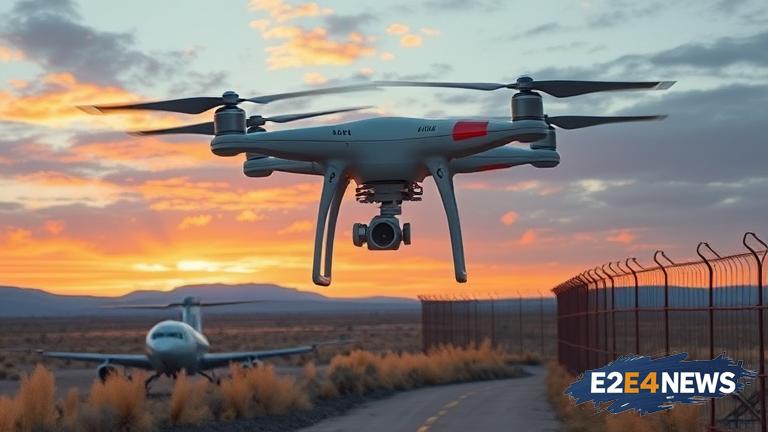The utilization of drones in homeland security has become a significant aspect of border patrol and national security. These unmanned aerial vehicles (UAVs) are equipped with advanced technology, including high-resolution cameras, sensors, and GPS, allowing them to effectively monitor and surveil large areas. The deployment of drones along the border has been shown to be highly effective in detecting and preventing illegal activities, such as human trafficking and drug smuggling. Additionally, drones are able to access remote and hard-to-reach areas, providing a level of surveillance that would be difficult or impossible for human patrols to achieve. The use of drones in homeland security is also cost-effective, as they can operate for extended periods of time without the need for rest or rotation. Furthermore, drones can be equipped with a variety of payloads, including communication equipment, sensors, and even weapons, making them a versatile tool for a range of security applications. The integration of drones into homeland security operations has also led to improved collaboration and coordination between different agencies and departments. For example, drones can be used to provide real-time video feed to command centers, allowing for more effective decision-making and response. The use of drones in homeland security is not without its challenges, however, as there are concerns regarding privacy and the potential for misuse. To address these concerns, strict regulations and guidelines have been put in place to ensure that drones are used in a responsible and ethical manner. Despite these challenges, the benefits of using drones in homeland security are clear, and their deployment is likely to continue to grow in the coming years. In fact, the use of drones in homeland security is expected to become a key component of national security strategies, as they provide a unique and effective means of enhancing border security and protecting against potential threats. The development of new technologies, such as artificial intelligence and machine learning, is also expected to further enhance the capabilities of drones in homeland security. For instance, AI-powered drones can be used to analyze video feed and detect potential security threats in real-time. The use of drones in homeland security is also expected to have a significant impact on the way that border patrol and national security operations are conducted. For example, drones can be used to provide support for search and rescue operations, as well as to monitor and track natural disasters. The deployment of drones along the border has also led to improved relationships between different countries, as they provide a means of enhancing cooperation and collaboration on security issues. In addition, the use of drones in homeland security has also led to the creation of new jobs and industries, as companies develop and manufacture UAVs and related technologies. The use of drones in homeland security is a rapidly evolving field, with new technologies and innovations being developed all the time. As such, it is likely that we will see significant advancements in the use of drones in homeland security in the coming years, as they become an increasingly important tool for enhancing national security and protecting against potential threats. The future of drones in homeland security is exciting and full of possibilities, and it will be interesting to see how this technology continues to evolve and develop in the years to come. In conclusion, the use of drones in homeland security is a significant development that has the potential to greatly enhance national security and protect against potential threats. As the technology continues to evolve and improve, it is likely that we will see even more innovative applications of drones in homeland security, and their deployment will become an increasingly important aspect of national security strategies.
